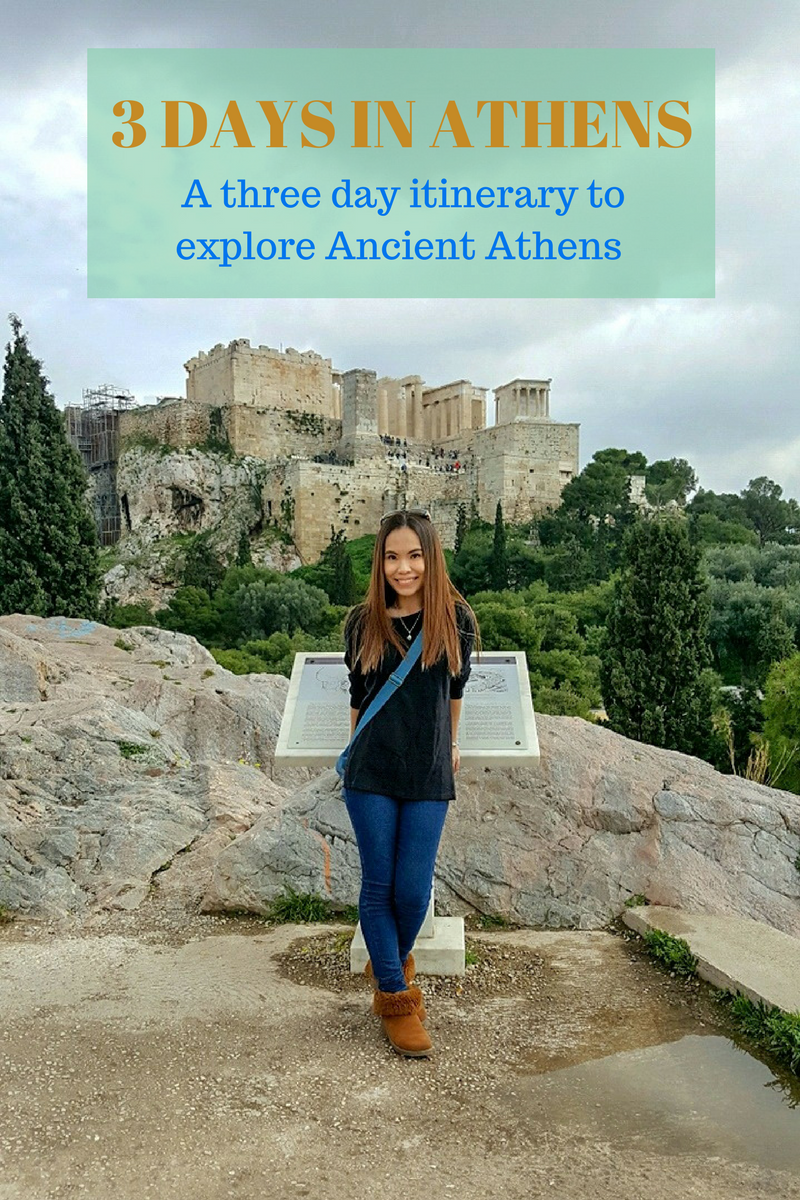
A beacon of the ancient world where theatrics, mathematics, philosophy and democracy were born, Athens is a cradle full of its mysterious ancient wonders built since its early affluent civilisation first existed in this city. Every street leads to a fascinating find; a monument next to a cafe, ancient ruins right below a pedestrian walkway or a plot of ancient archeological ‘property’ sitting right beside a railway track. All of these primitive yet historic remains are an essence of Greece’s classical heritage and the evolutionary existence of its past.
Through the years, major transformations have taken place in the city. The bustling Athens today is a paradox mix of old and new, conservative versus contemporary. Modern chic-designed buildings that blend in ancient architectural brilliances sprawl across the cityscape while its inner-scape is dotted with quirky neighbourhoods, ‘artistic’ graffiti street-art, modern historical museums, eccentric cafes, fine dining restaurants and so much more.
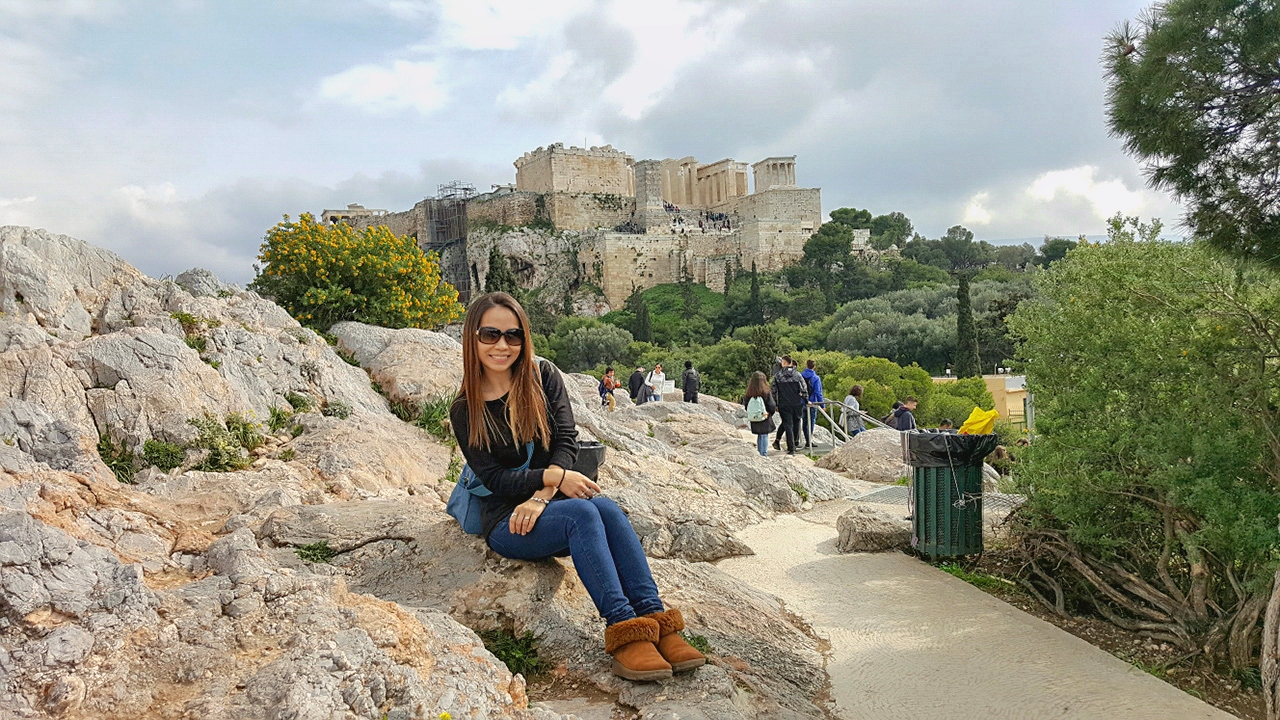
A juxtaposition of two eras, Athens has a lot to explore. Three days is good enough to get an intimate understanding of the city and its elaborate designs and culture. However, for a first timer in Athens, having just three days in this captivating city may be challenging and rushed if you do not have a clue on how to kick start your journey of adventure.
To help you get the most out of your three days in Athens, I have compile a complete itinerary around the ancient city of Athens. There are no hard and fast rules to explore this city. So please re-order the following itinerary to suit your travel style. Always check the operating hours before visiting as it differs according to its seasons. For summer months, the operating hours is longer while in winter, most sites close at 15:00 hours.

Before we get the tour started, here’s a little information on the early architectural styles and designs to help you understand in case you get confuciously-confused (pun intended) along the way. The figure above shows the three main architectural designs which you will see on most of the monuments of Ancient Athens with the ‘Doric-style’ being the most classic of all.
So let’s begin.

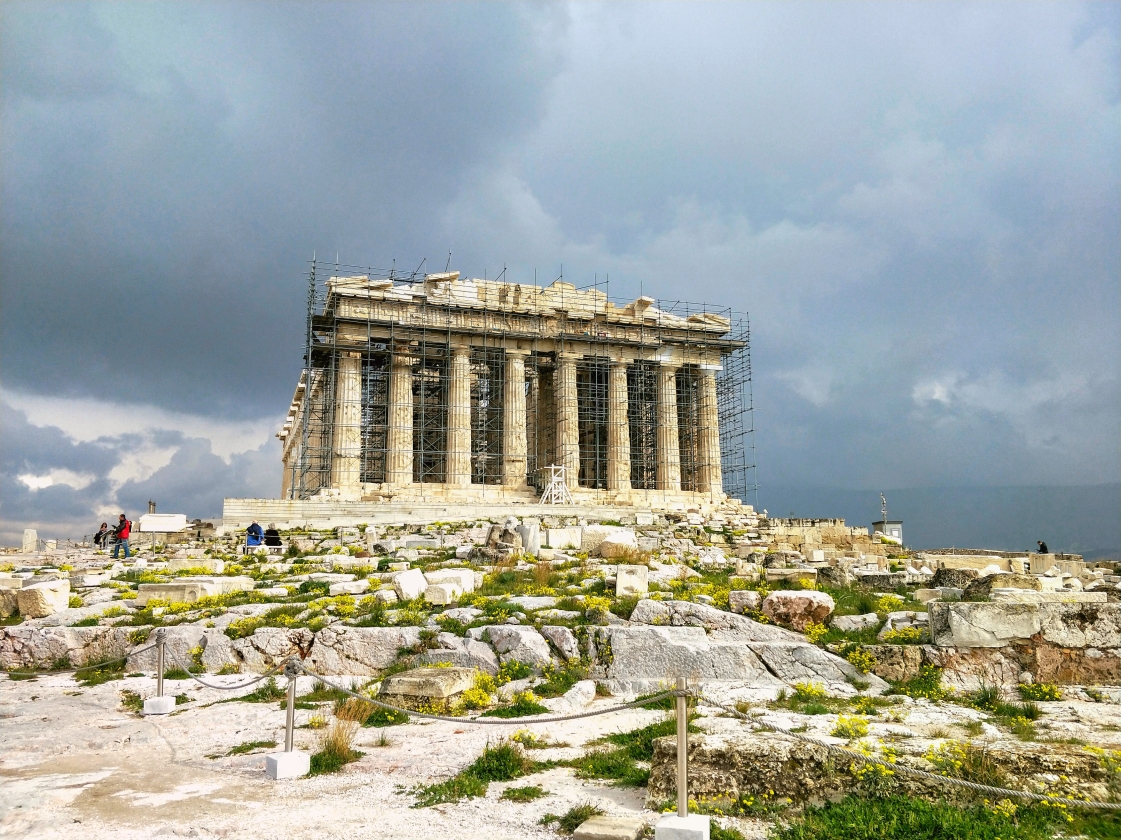
Areopagus Hill
Start your day early in morning. Take a walk up to this breathtaking historical hill located on the northwest slope of the Acropolis. Also known as Mars Hill, this is an important biblical location where the Apostle Paul, in the New testament, had preached to the early congregation while on his way to Rome. The top of the hill offers a terrific 360° panoramic view of the city and several other archaeological sites. Behind, you’ll get a glimpse of a spectacular postcard view of the Acropolis. The pathway leading up to Areopagus Hill is kind of treacherous. So please use the metal staircase instead for your safety.
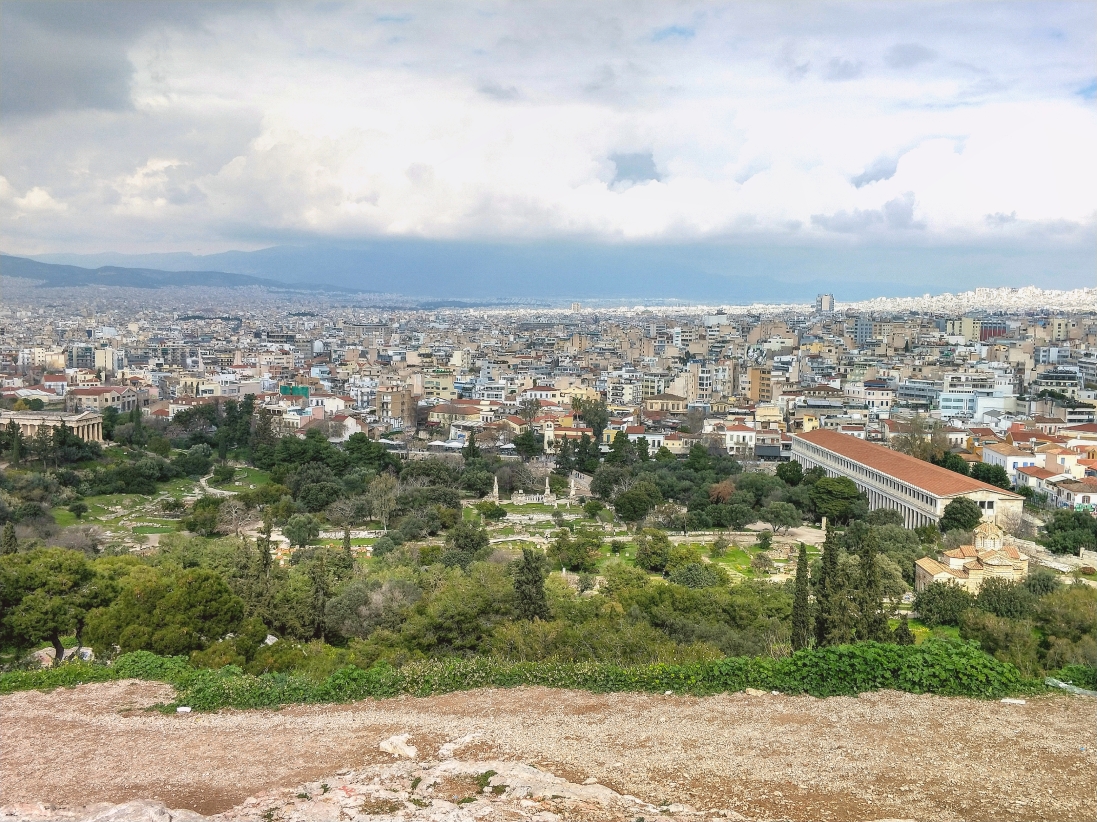
The Acropolis
Tip: Visit the Acropolis in the early morning to avoid big tour groups and murderous heat especially during summer season.
Ticket: There is a combo ticket available, with a validity of five days, costing 30€ that includes the entrance fees for seven other archeological sites as follows:
- Acropolis and its South Slope
- Archaeological Site and Museum of Ancient Agora
- Roman Agora and the Horologion Observatory
- Temple of Olympian Zeus
- Keramikos Cemetery and the Athens Main Gate
- Hadrian’s Library
- Lyceum of Aristotle
Note: Depending on the seasons of your visit, the operating hours of archaeological sites and places of interest may varies. Please check your timing before visiting.
The Acropolis is one of the most remarkable spots in Greece and is a must visit for every traveller. Beset in the centre and on the highest plateau in Athens, the Acropolis is the main icon of Athens and home of its infamous Parthenon. The Acropolis itself is a vast compound consisting several other prominent ancient monuments within its keep. There is lots of uphill walking to do and the grounds within the Acropolis is uneven. So, do make sure you are wearing a good pair of comfortable shoes when visiting this place. It took me approximately three hours to finish the whole self-walk-around-tour with a lot of photography at each monument at every angle. Thus, visiting the Acropolis in the early morning is definitely a great idea as you escape the scorching heat and the big tour groups that congest the walkways and selfie-perfect spots.

Propylaea
An awe-inspiring column-style ancient ‘gate’ building that is built to make a lasting impression for visitors. The Propylaea was delineated with exquisite designs and craftsmanship of its time. Unfortunately, it was never completed and was repurposed by its colonists throughout its lifetime. With a concourse area overlooking the Odeon of Herodus Atticus below and a nostalgic flight of stairs leading up to the Propylaea, visitors are sure to have a busy time posing for many picture perfect shots on each and every spot they set foot on just to squeeze the front columns into their picture. The Propylaea gate is the only entrance to the Acropolis compound and is situated on the west side of the plateau.
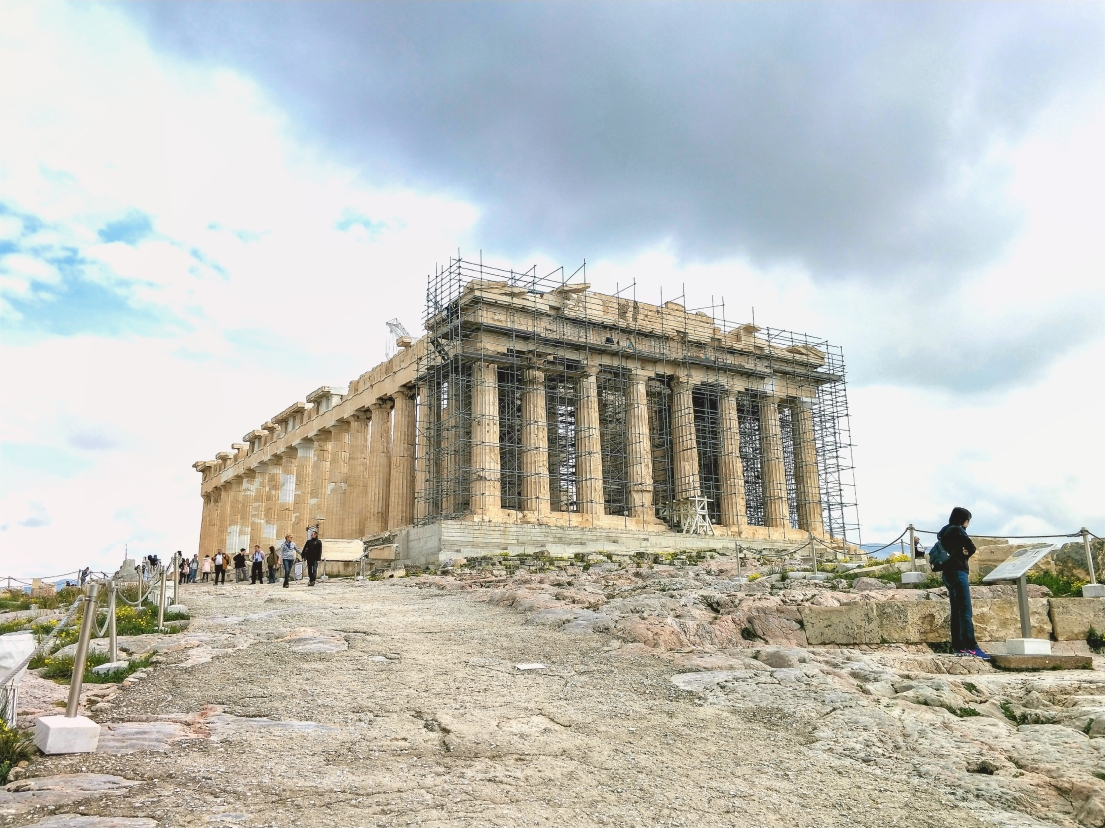
Parthenon
Taking the centre stage high on the top of the Acropolis, the splendour of the Parthenon can be witnessed from most corners and streets around Athens city. Its grandeur continues to shine into the night, with flood lamps rigged around it, shining like a golden palace when viewed from the foot of the hill. Built in the mid 400 B.C., the Parthenon was dedicated to the Greek goddess, Athena the Virgin who was believed to have blessed the city with wealth and protection when the Greeks repelled the first invasion of Persia. Unfortunately it was never completed when the Persians finally conquered Athens during the second invasion of Persia. It was badly damaged when the Persians burned the Acropolis down out of revenge. It was rebuilt under Emperor Hadrian’s time but was pillaged, sacked, destroyed, and repurposed over the course of Greece’s occupation by foreign empires. One of the special feature of the Parthenon is none other than its Doric style columns that have been symbolised as the icon of democracy in many other countries.
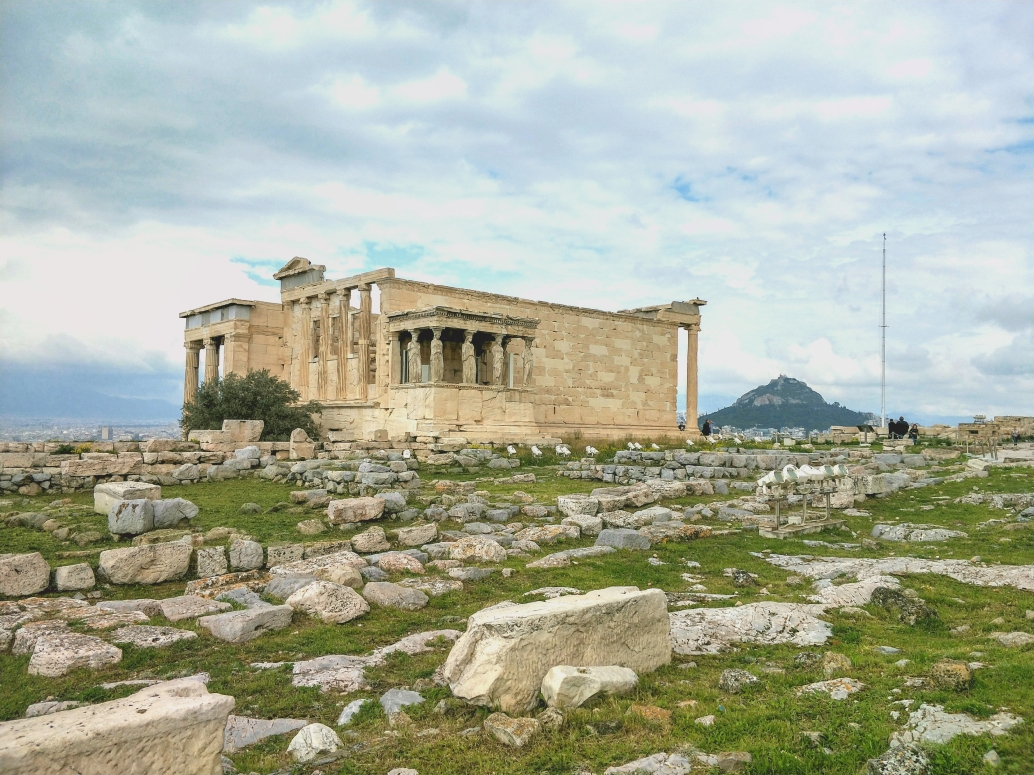
Old Temple of Athena
Seated between the Parthenon and the Erechtheion (in the foreground) is the old temple of Athena, dedicated to Athena the Victory. The temple was heavily destroyed during the second Persian war with little to no foundation or blueprint left of its original building layout. Thus, all its beauty, its great statues of Athena and cultural significance have been lost forever. What you see of the temple today is the remnants of its walls on the ground.
The Erechtheion
The most mysterious temple in Athens but yet the most sacred to the archaic Athenians that has since been forgotten. Seated on what was believed to be the most ‘sacred’ founding grounds on the Acropolis near the northern edge of the limestone plateau, the Erechtheion was a Greek architectural wonder in itself. The only Athenian temple to be built on different ground levels, this iconic structure was unique as it had a mixture of corinthian columns on one side and votive statues on another. It was within this temple that the sacred olive tree spawned by Athena and the salt water spring spawned by Poseidon resides within its compound. The eastern part of the temple was dedicated to Athena and the western part to local heroes like Boutes, Hephaistos and other gods.
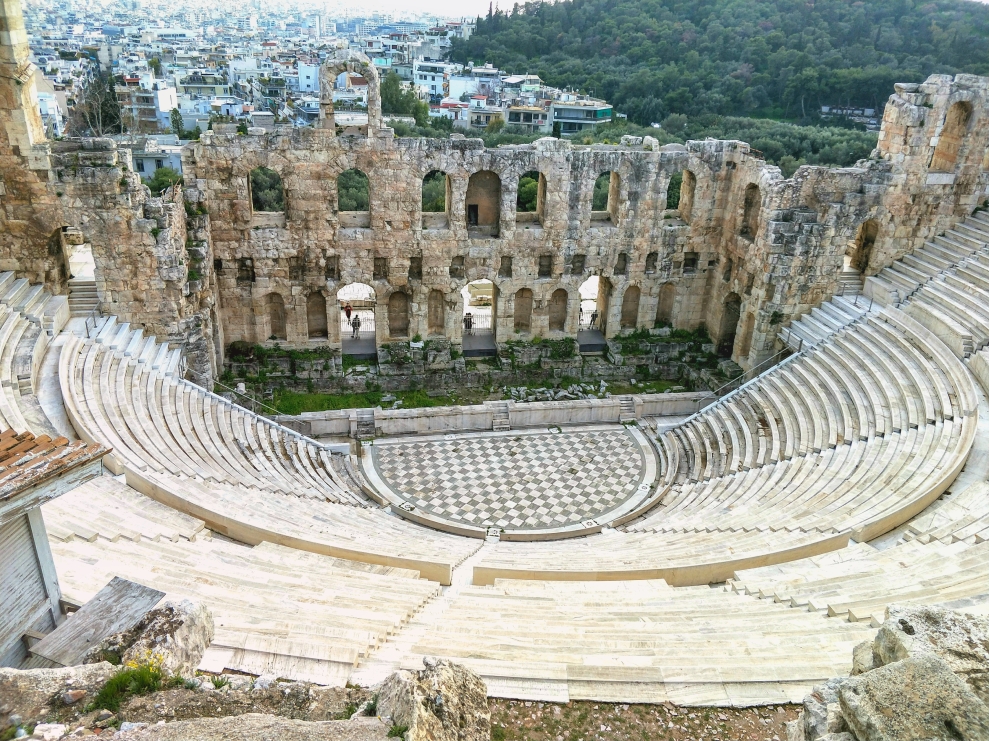
Odeon of Herodus Atticus
One of the most stunning classic amphitheatres I’ve seen so far! The site is closed during my visit. However, I caught a perfect view of it from before the Propylaea along the South Slope. Also known as the ‘Herodeon’ by locals, this legendary open-air, stone theatre is built by Herodus Atticus in the 160 A.D. in memory of his wife and is said to be one of the stellar theatres of its time. The partially restored theatre has hosted some of the world’s best musical performances and major festivals to date. Simply look at this gorgeous theatre. Who in the right mind wouldn’t want to go back in time to attend a live performance or concert in this ancient theatre?

Theatre of Dionysus
The first Greek theatre built in the 4th century B.C., this amphitheatre was where the great stage-play “Tragedies of Sophocles and Euripides” was first performed. Designed with an open air concept with a stunning backdrop featuring the Acropolis and stage side facing the Aegean Sea, this amphitheatre had a large sitting capacity that could accommodate up to 17,000 spectators! Theatrical plays had a very important role in Greek history as it wasn’t just for entertainment but an inspiring form of expression of arts and culture that helped shape society. It was here that the first form of theatrics began. Not only was it used for plays and performances back then, but it was also used to host religious festivals that honour their god Dionysus.

Acropolis Museum
Boasted as one of the world’s top rated museum, the Acropolis Museum exhibits not only the knowledge of talented art and excellent craftsmanship of ancient Greece, but also the historical legends and myths of the founding of Athens and its architectural wonders that have impacted today’s modern building designs. From the museum’s ultra stunning design to the enormous glass walkways showcasing the ancient city below, this museum even houses most of the reconstructed frescos of the Parthenon including some video documentaries of the life and restorative efforts being conducted on the Parthenon. Coupled with a remarkable view of the Acropolis from the outside, the amount of information and artefacts gathered here will help you understand the myth and legends that helped shape the story of the Parthenon and its surrounding temple complexes as well as the early lifestyle of Athenians from the early B.C. Some of the main highlights of each floor are as follows:
- Ground floor – Exhibition of ancient artefacts found in and around the Acropolis, with some collection of theatrical art works and vases excavated from the Sanctuary of Nymphe.
- First floor – The statue of the the Calf Bearer also knowns as the Moschophoros; a painted marble statue of young man carrying a calf for sacrifice. This floor also houses a complete collection of statues, frescos and other architectural elements still used in today’s structures.
- Top floor – Everything about the Parthenon; the Parthenon Gallery with a panoramic views over the ancient city of the Acropolis.

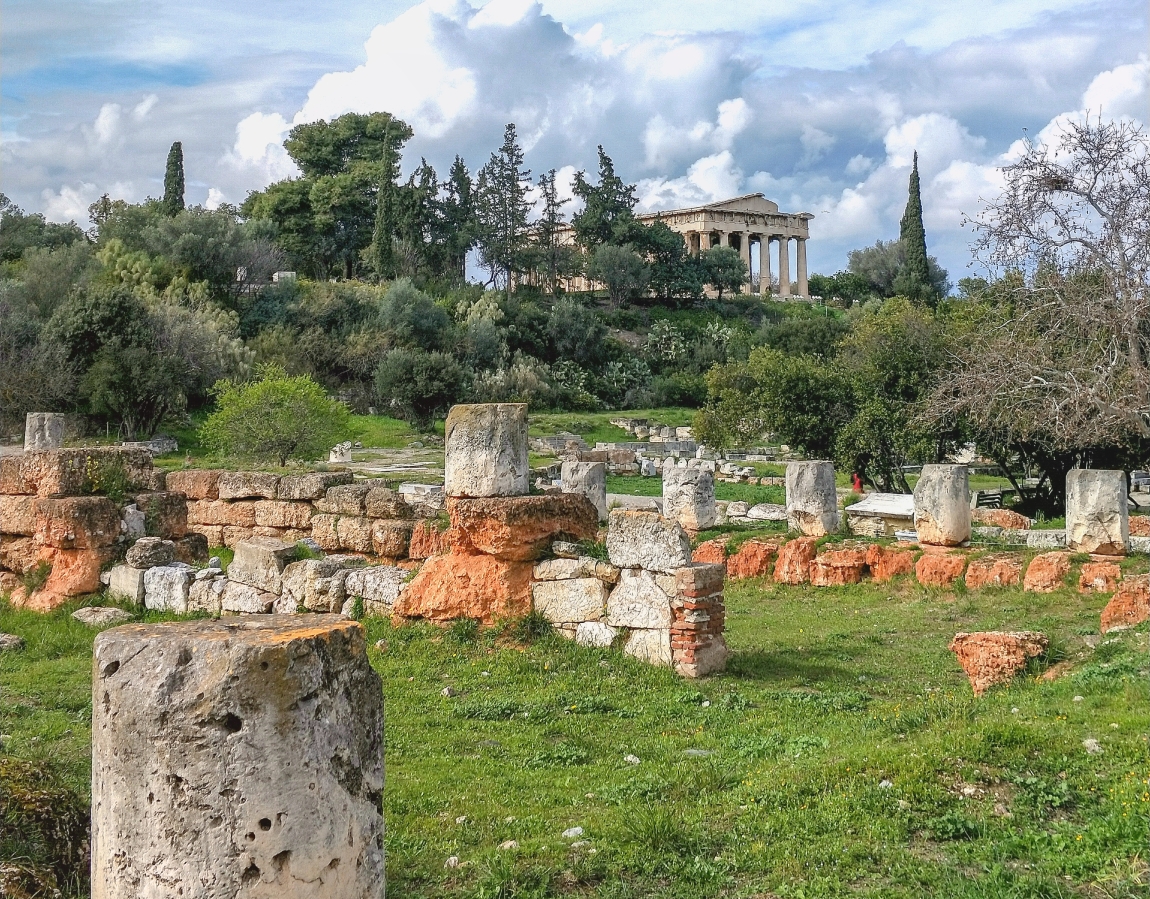
 Ancient Agora
Ancient Agora
‘Agora’ meaning ‘a place of gathering’ was a commercial centre where all offices, shops, markets and schools were centered. This was a social hub for all political, business and lifestyle activities in the early Athenian civilisation. Just like today’s world, there was much urban and infrastructure planning such as roads and sanitation leading up and around the civic centre area. Sadly, all that is left of today are the fragments of ruins that was left behind from centuries of colonial rule by different empires and the repurposing of those construction materials for redevelopment. Strolling around the Ancient Agora seems to be stepping back into time, witnessing the architectural inventiveness and livelihood of the early archaic Athenian people. Located within this archaeological site or ‘ancient commercial hub’ are the Stoa Attalos II, a school where Socrates taught, and, the Temple of Hephaestus.
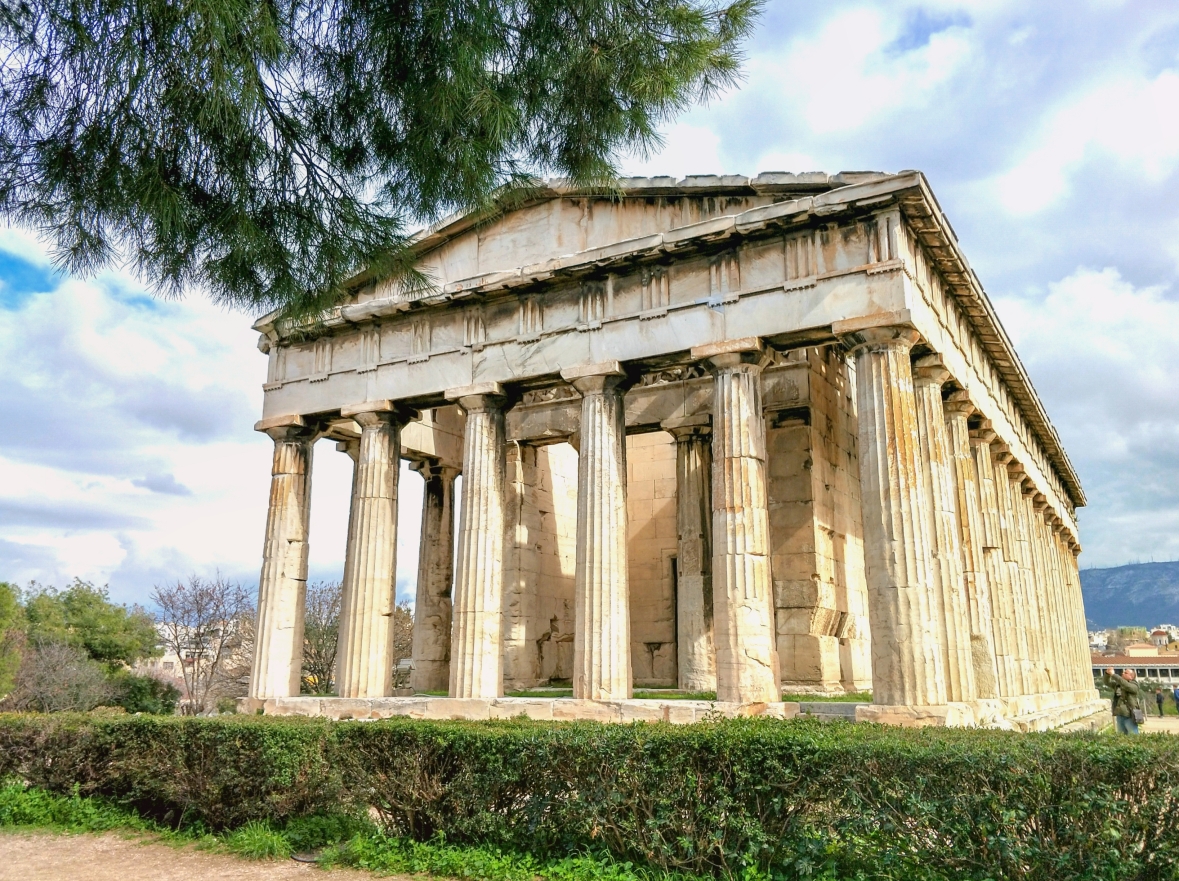
Temple of Hephaestus
Located at the top of Agoreos Koronos hill on the west side of the Ancient Agora compound is one of Athen’s most well preserved ancient temple to date. Built in the early 450 B.C., the Temple of Hephaestus is dedicated to Hephaestus, the god of fire and Athena, the goddess of pottery and crafts. Completely designed in Doric style by an architectural talent Iktinus, the temple comprises of 6 columns on the east and west side, and 14 on the north and south. These almost intact columns have become the most important significance of this temple as it gives researchers and idea of a scaled model for all the other great temples in Athens that do not stand today.
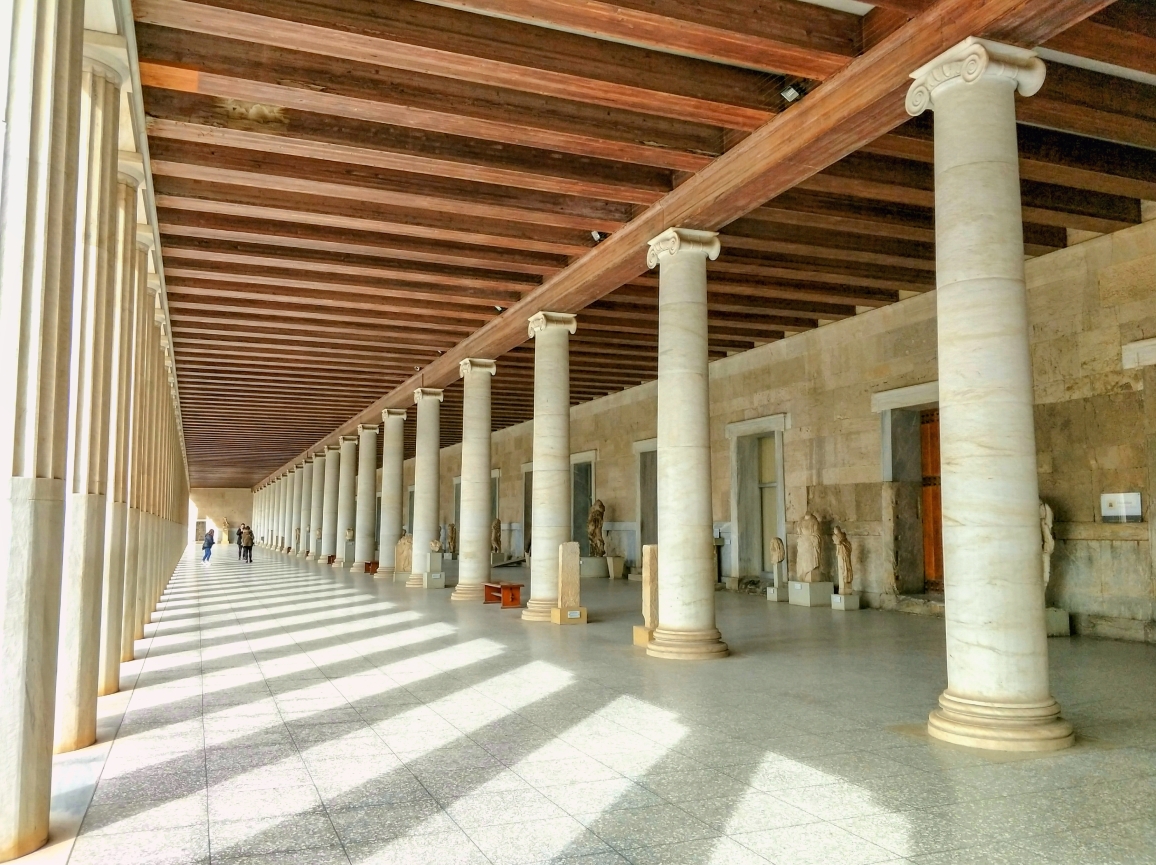
The Stoa of Attalos
Seated on the east of the Ancient Agora is an elaborate building that is hard to be missed. Built in the early 150 B.C. by Attalos II, King of Pergamos, the Stoa of Attalos is a gift of appreciation to the Athenians for his time studying under philosopher Karneades. A combination of Doric and Ionic designs, this building was constructed completely out of local materials like marbles and limestone. This ancient two-storey ‘shopping mall’ comprised of 42 shops where it was leased out by the Athenian government and was a locale where residents gather and shop. Today, the stoa houses the Ancient Agora Museum with vast archaeological exhibits found during the systematic excavations by the American School of Classical Studies around the area. Some artefacts found here date from the Neolithic to the Post-byzantine and Ottoman periods.
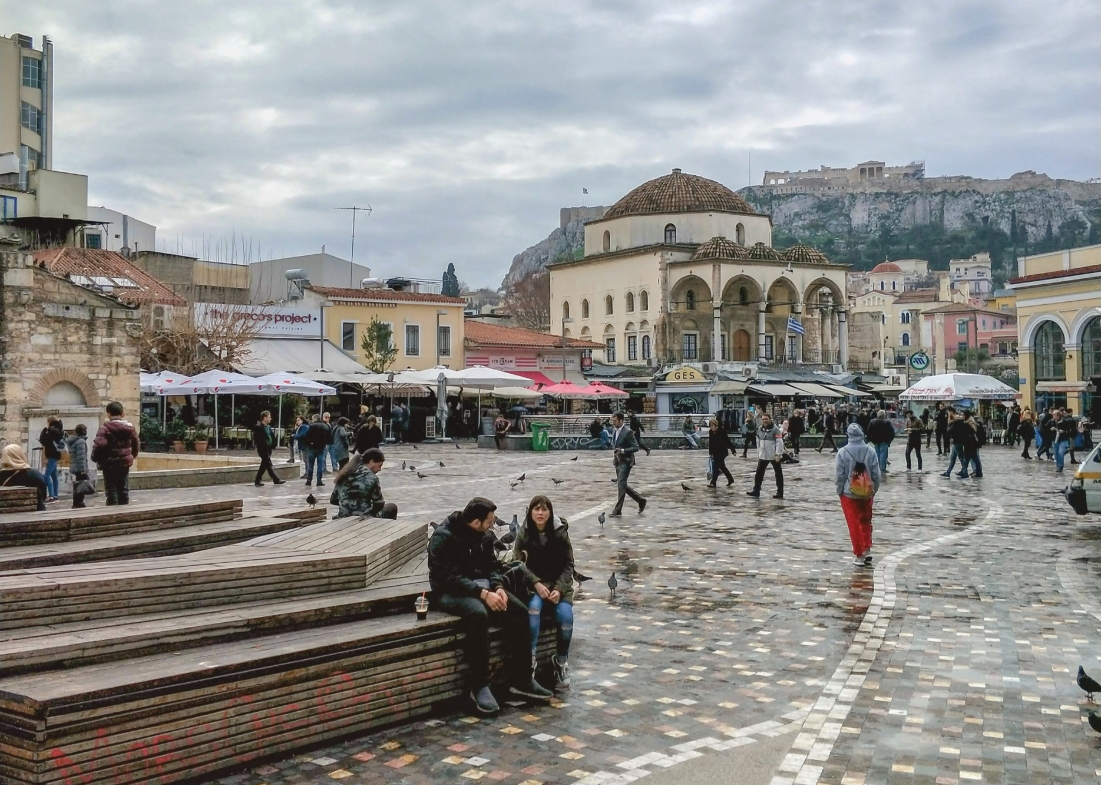
Monastiraki Square
A large public square filled with modern contemporary art pieces and a beautiful backdrop of the Acropolis. Dotted with shops and cafes, this square is full of life and brimming with daily local activities. A local street flea market stretches along Ifestou and Adrinau Street which starts right next to the Monastiraki subway entrance. Right in the middle of the square, you will be greeted by an archeological site found during a dig when the subway was under construction. This square is named after the large Ottoman monastery situated along the main road which is now an orthodox church that still chimes every hour.

Central Municipal Athens Markets
Want to experience the true Athenian life? This is where you should go. A local old market with a great variety of fresh and cheap local produce all under one roof. The market is divided into two sections, one for meat and one for seafood. Here you will get to witness the busy market scene as people rush to get their hands on the freshest produce while sellers tout their prices out loud to attract customers’ attention as they square-off with their neighbouring competitor stalls in an open price competition. Right outside the market, there are bazaars and shops selling dry products, condiments and produce and even pre-loved collectible items.

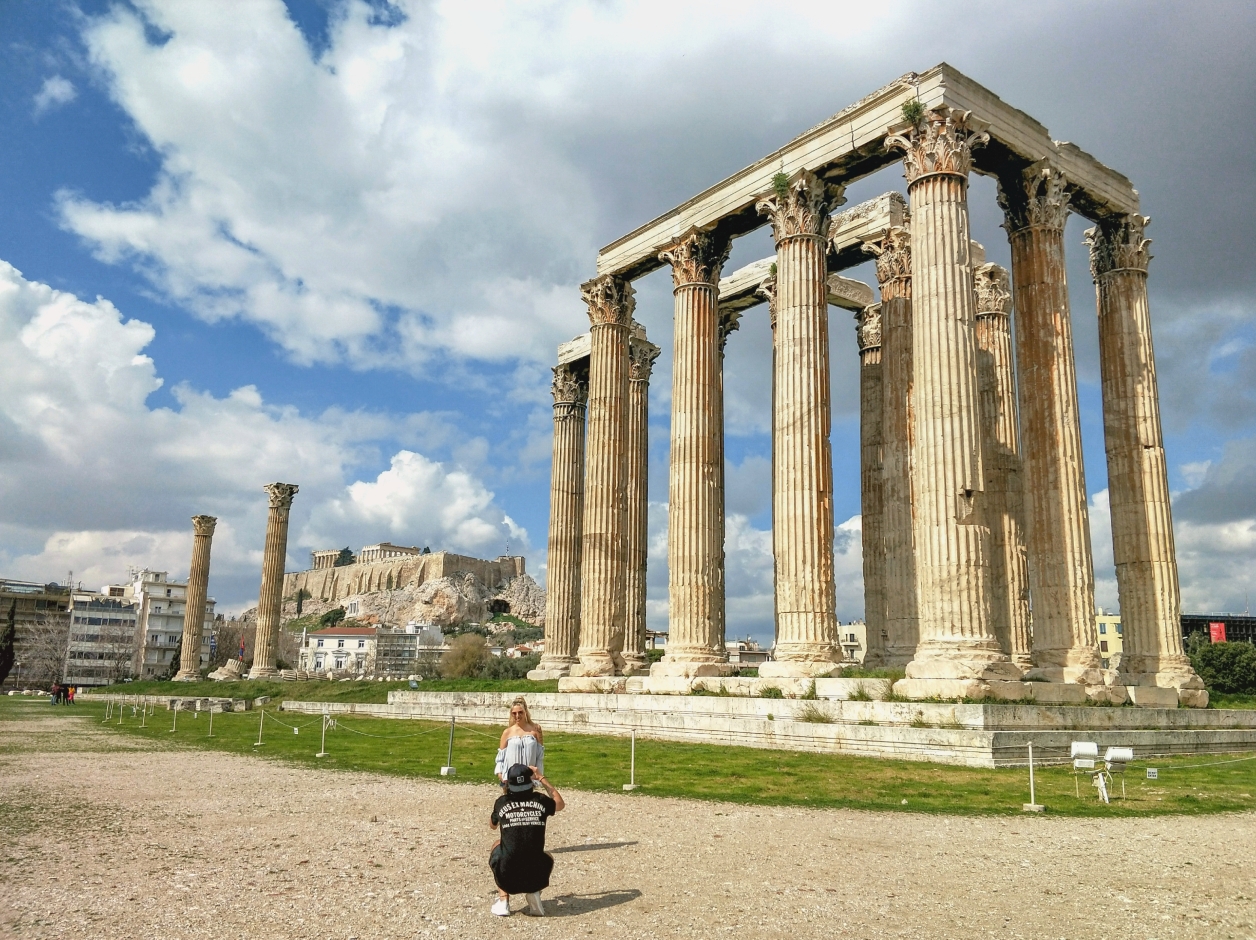
 Temple of Olympian Zeus
Temple of Olympian Zeus
Located right at the centre of Athens, the Temple of Olympian Zeus is one of the most stunning temples with a totally unblocked view of the Acropolis shining at the top of its back. Picture-perfect and insta-famous, visitors are always crazy in capturing a flawless shot of this temple ruin with the Parthenon seated across at the top of the hill diagonally. Taking a duration exceeding 700 years to construct, the Temple of Olympian Zeus was immense and detailed. Originally supported by 105 Corinthian columns, to date, the temple is only left with 15 columns, each with a height of 17 meters tall. To escape the crowd, head there early in the morning. I’m sure you’ll snap some great shots for memories.
Hadrian’s Arch
Also known as the triumphal arch, Hadrian’s arch marks the line between the ancient Athens and Hadrian’s ‘new’ Athens city. The arch was built in 131 B.C. as a symbol of celebration in accordance to the Roman Emperor Hadrian’s arrival to Athens and to thank him for his benefactions for the city. Symmetrical in design and crowned by pilasters of Corinthian rhythm, the arch is constructed of Pentelic marble and its architecture shares a resemblance to the Roman arches.
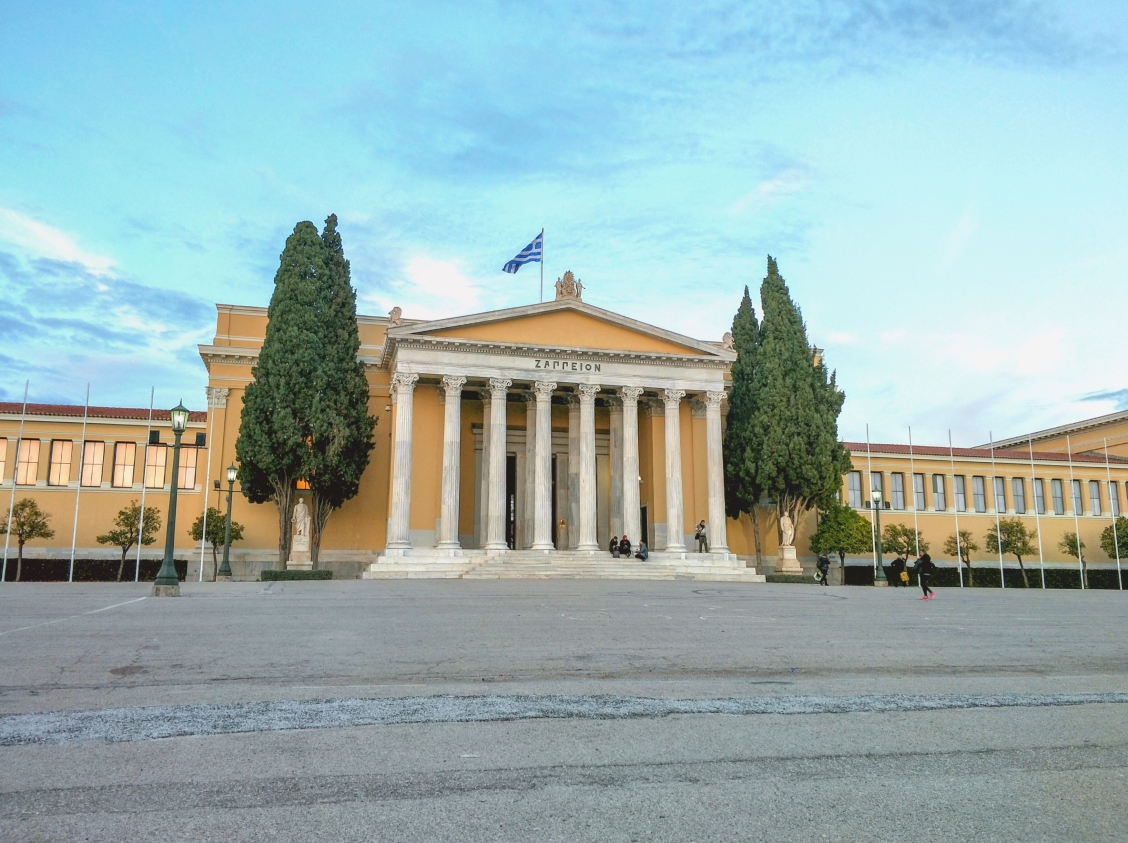
Zappeion
Named after the Greek philanthropist Evangelos Zappas, this exhibition hall was built for the purpose of hosting the exposition of the first modern day olympics event held at the olympic stadium nearby. Zappas had dedicated all his wealth to help revive the Greek culture, heritage and traditions and to showcase them to the world. The colonnades of this building are impressive as they were built to reflect upon Greek neo-classical architecture and engineering. This building is still used as an exhibition centre today.

Aristotle’s Lyceum
The greatest philosopher, historian and scientist of his time, Aristotle, the former student of Plato, returned to Athens to open his own school (or Lyceum) here after having tutored Alexander the Great at Macedon. It was after Aristotle’s mentoring and teaching that led Alexander to conquest against Greek’s old nemesis, the Persian empire. The Greek empire under Alexander spread far and wide all the way to Afghanistan, India and Egypt. Aristotle’s fame had also spread far and beyond bringing scholars from all over the world to come to study under him. Among the studies conducted at this school was horticulture bearing evidence of plants from all over the world being adapted and planted here.

Syntagma Square
Translated literally as Constitution Square, this square in front of the old palace was where the first king of Greece, King Otto, was pressured to fulfil his promise of enacting the constitution for the people. Today, the old palace is now used as the parliament but this square has not changed its political importance. When austerity measures were announced during the Greek debt crisis, its people demonstrated here for days until a new unity government was formed. This square is situated at the end of the Ermou Street shopping belt. The Tomb of the Unknown Soldier lies beneath the parliament guarded ceremoniously by the Greek Evzones Presidential Guards. You can catch the change of guard ceremony daily in the early morning or evening.

This three day itinerary only covers the top recommended sites for the convenience of travellers who have limited time and days in Athens. Athens has way more archeological sites and museums to visit and experience but should be enjoyed at a leisurely pace as there are thousands of years of history and artefacts to indulge on.

Next Read: 20 Photos To Inspire You To Visit Athens

Continue Exploring …
Cruising The Saronic Gulf With Evermore Cruises
The Ultimate Guide To Solo Female Travel
The Ultimate Barcelona Travel Guide
How I Started A Life Of Travel
Bucket List Dream Destinations Of My Life
Categories: Athens, Destinations, Greece





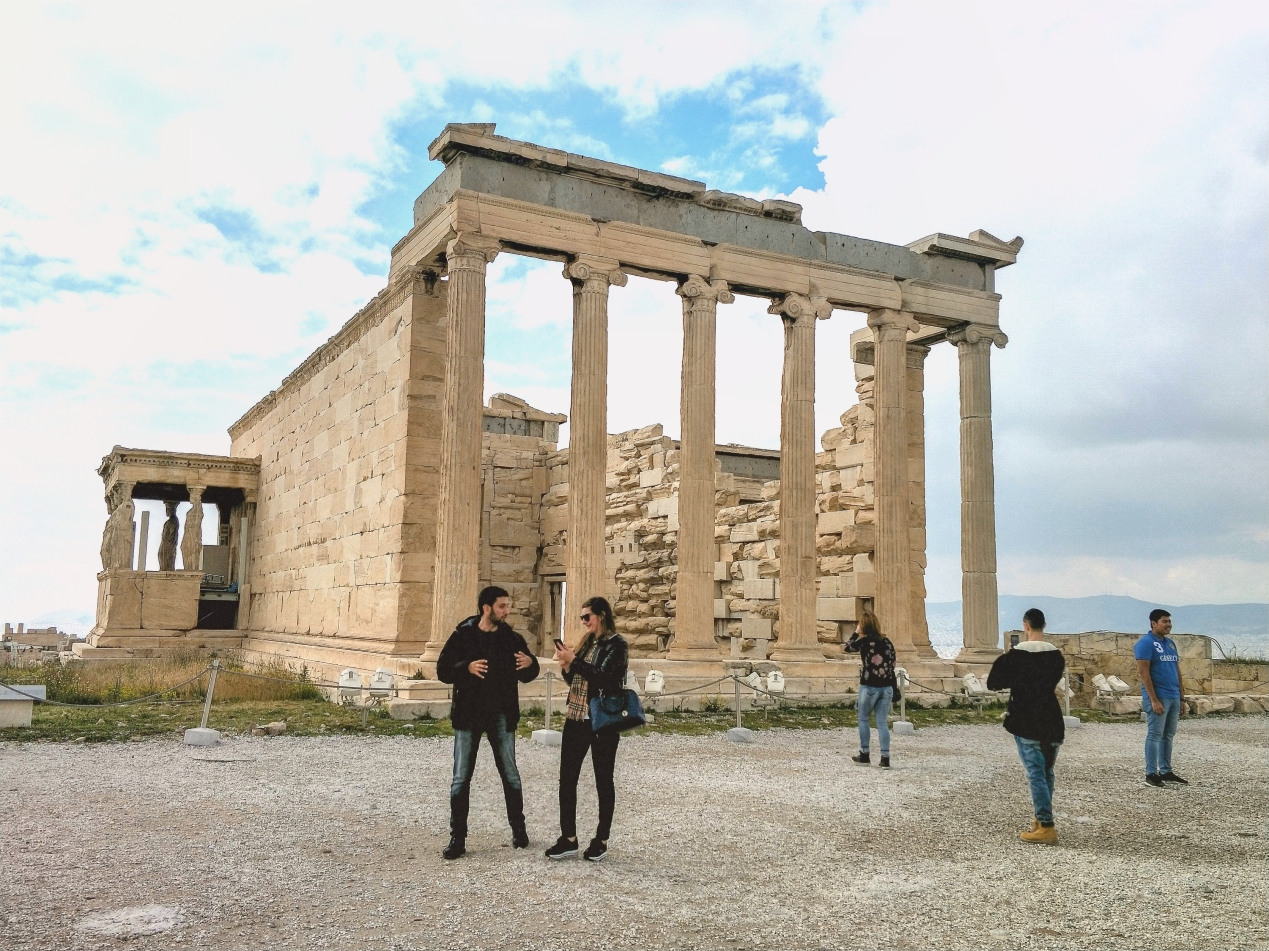

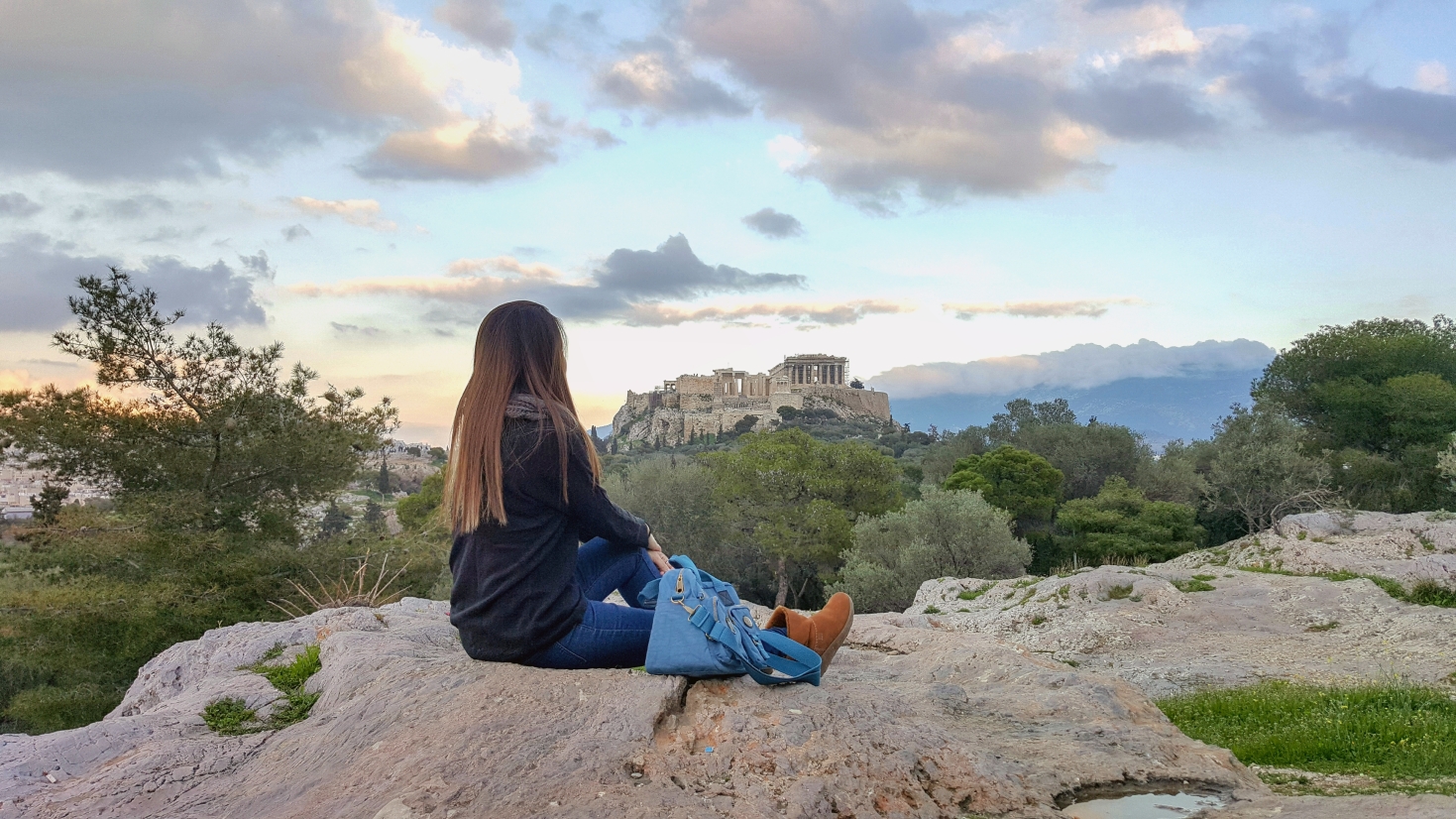



Greeceis a dream for me… So much history!! Great photos and info, thanks!
LikeLike